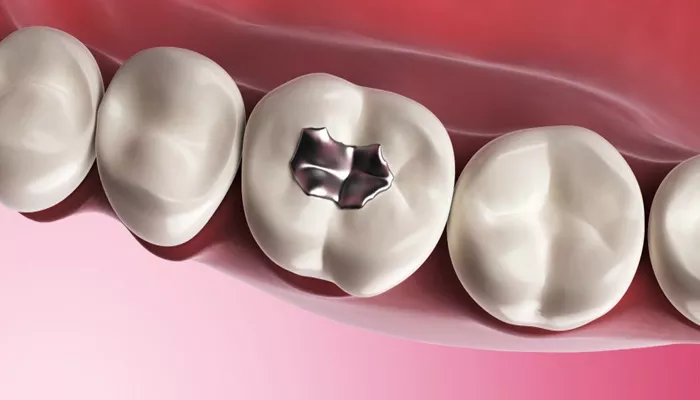Dental amalgam fillings have been used for over a century as a durable and cost-effective material for restoring decayed teeth. These fillings are composed of approximately 50% elemental mercury combined with a mixture of other metals such as silver, tin, copper, and zinc. Mercury’s unique properties allow it to bind these metals into a stable, hard substance suitable for dental restorations.
Despite their widespread use, concerns have been raised about the long-term health effects of mercury exposure from amalgam fillings. Mercury is a known toxic heavy metal, and dental amalgams continuously emit small amounts of mercury vapor, which can be absorbed by the body. Understanding the potential long-term side effects is critical for patients, dental professionals, and policymakers.
How Mercury from Amalgam Fillings Affects the Body
Mercury vapor is released from dental amalgam fillings primarily during placement, removal, and through daily activities such as chewing, teeth grinding, and consuming hot liquids. This vapor can be inhaled and absorbed into the bloodstream, accumulating in various organs including the brain, kidneys, liver, lungs, and gastrointestinal tract.
The half-life of mercury in the brain can span years to decades, meaning mercury accumulates over time, potentially reaching toxic levels. The amount of mercury exposure from fillings is generally low—5 to 30 times lower than occupational exposure limits—but chronic exposure raises concerns, especially for sensitive populations.
Long-Term Side Effects of Amalgam Fillings
Neurological Effects
Mercury is a potent neurotoxin. Prolonged exposure to mercury vapor from amalgam fillings has been linked to a range of neurological symptoms, including:
Increased excitability and tremors in fingers, eyelids, lips, and in severe cases, long-term shaking of hands and feet.
Mood disorders such as anxiety, depression, irritability, and memory problems.
Headaches, insomnia, and fatigue.
Potential contribution to neurodegenerative diseases such as Alzheimer’s, Parkinson’s, and Amyotrophic Lateral Sclerosis (ALS).
The developing brain of fetuses and young children is particularly vulnerable to mercury exposure, which may interfere with normal brain development and function.
Kidney and Immune System Effects
Mercury exposure can adversely affect kidney function, as the kidneys are a primary site for mercury accumulation and detoxification. Chronic exposure may lead to kidney inflammation and damage.
Mercury may also disrupt the immune system, potentially triggering autoimmune disorders and hypersensitivity reactions, including allergic responses to amalgam components.
Oral and Local Effects
Locally, amalgam fillings can cause inflammation of the gums, excessive salivation with a metallic taste, and oral lichenoid reactions (lesions resembling lichen planus). Some individuals may experience burning mouth sensations or “mercury tattoos” (discoloration caused by amalgam particles embedded in oral tissues).
Other Systemic Effects
Long-term mercury exposure has been associated with a variety of systemic health issues, including:
- Cardiovascular problems.
- Reproductive dysfunction and thyroid disorders.
- Respiratory issues such as bronchitis and pneumonia in cases of very high mercury exposure.
- Increased oxidative stress and DNA damage, which may contribute to cancer risk.
Vulnerable Populations And Special Considerations
Certain groups are more susceptible to the adverse effects of mercury from amalgam fillings:
Pregnant women and their developing fetuses.
Children, especially under six years old.
Individuals with pre-existing neurological diseases such as multiple sclerosis, Alzheimer’s, or Parkinson’s disease.
People with impaired kidney function or known allergies to mercury.
The FDA and other health authorities recommend avoiding amalgam fillings in these populations when possible.
Risks Associated with Removal of Amalgam Fillings
While removal of amalgam fillings may be indicated in cases of damage, allergy, or patient preference, the process itself can increase mercury exposure if not done properly. Improper removal can release large amounts of mercury vapor, leading to acute symptoms such as nervous system upset and immune disturbances.
Specialized “mercury-safe” removal protocols have been developed to minimize exposure risks to patients and dental staff during the removal process.
Scientific Controversy and Consensus
There is ongoing debate in the scientific community regarding the safety of dental amalgam fillings. Some regulatory bodies and studies conclude that the low levels of mercury exposure from amalgams do not pose significant health risks to the general population. However, numerous studies and expert reviews highlight the potential for mercury accumulation, toxicity, and associated health effects, especially in sensitive individuals.
Autopsy studies have shown higher mercury concentrations in the tissues of individuals with amalgam fillings, and mercury vapor is recognized as highly toxic to neurons and other cells. The variability in individual sensitivity, genetic predisposition, and cumulative exposure complicates risk assessment.
Alternatives to Amalgam Fillings
Due to concerns about mercury toxicity, many dental practitioners now offer mercury-free alternatives such as composite resins, glass ionomer cements, and ceramic restorations. These materials avoid mercury-related risks and are increasingly preferred for children, pregnant women, and those with health concerns.
Conclusion
Dental amalgam fillings, while durable and cost-effective, contain mercury that can be released in small amounts over time, potentially leading to long-term side effects. These include neurological symptoms, kidney damage, immune system disruption, and local oral effects. Vulnerable populations such as children, pregnant women, and individuals with certain health conditions face greater risks.
Although scientific opinions vary, the trend is toward minimizing mercury exposure by limiting amalgam use and employing safer removal techniques when necessary. Patients should discuss with their dental professionals the benefits and risks of amalgam fillings and consider alternatives where appropriate.

